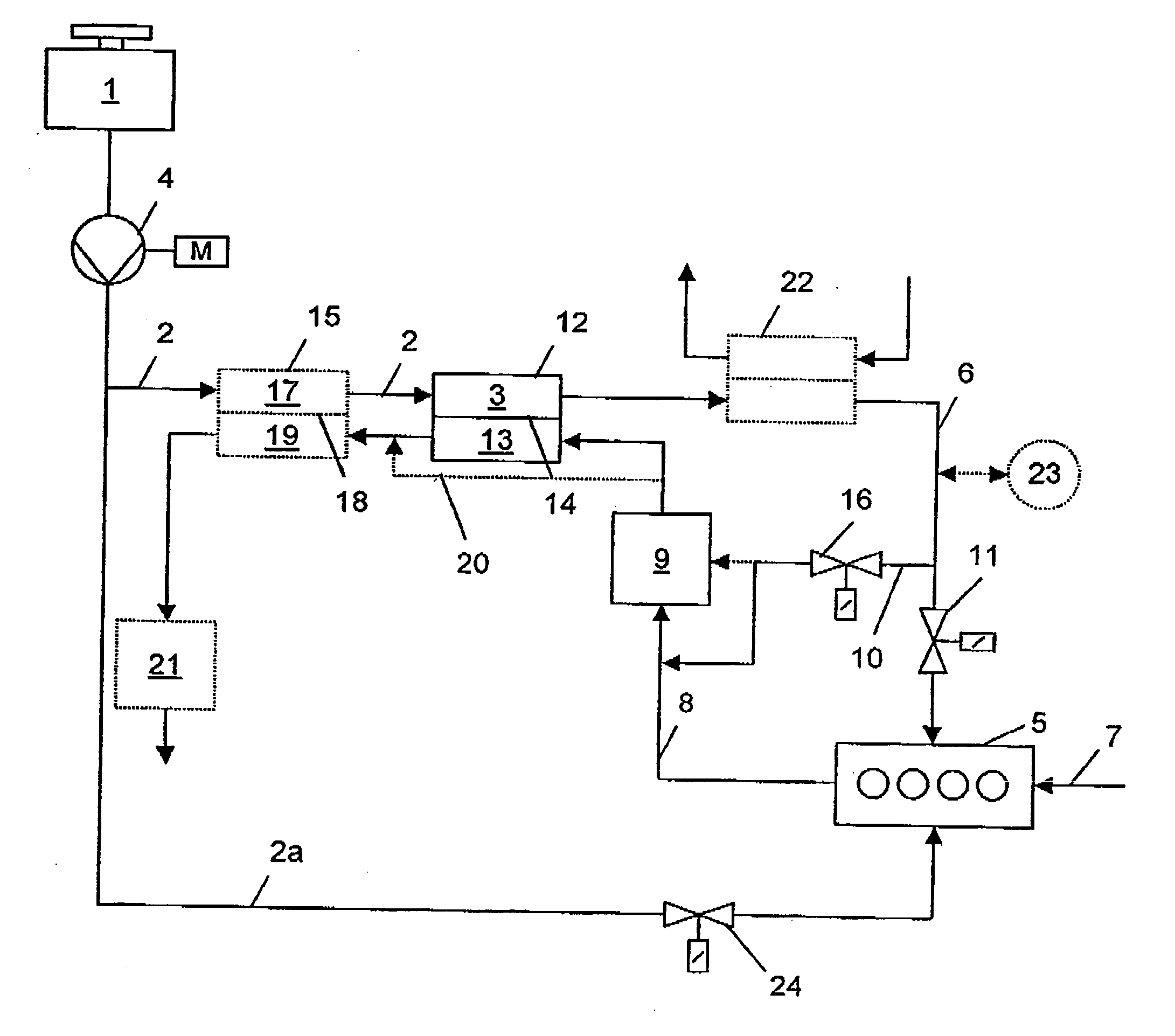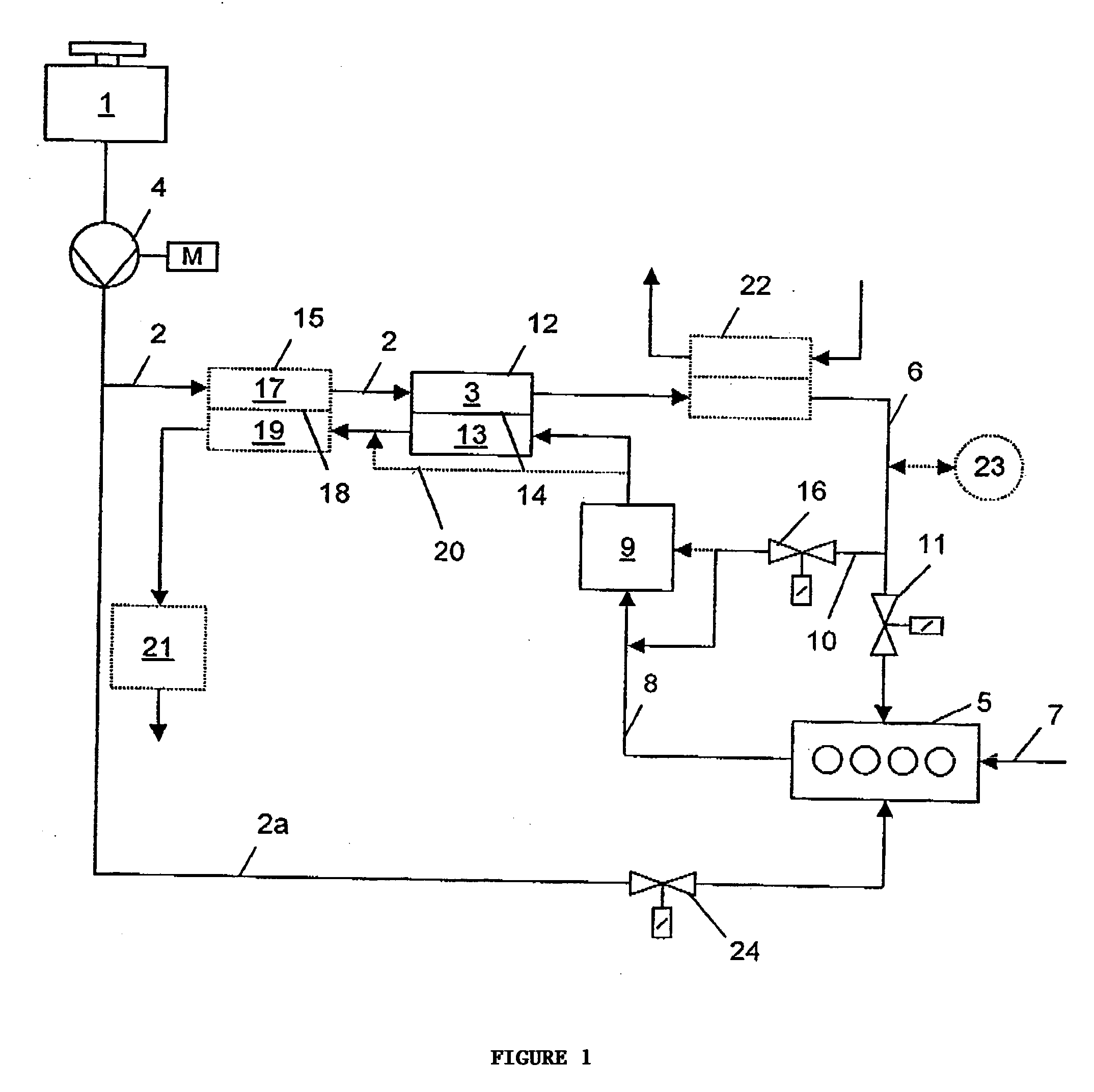Internal combustion engine fuel supply system
a fuel supply system and internal combustion engine technology, applied in the direction of machines/engines, separation processes, mechanical equipment, etc., to achieve the effect of reducing the nox content of engine exhaus
- Summary
- Abstract
- Description
- Claims
- Application Information
AI Technical Summary
Benefits of technology
Problems solved by technology
Method used
Image
Examples
Embodiment Construction
[0016] Raw fuel, preferably in liquid form, is carried in a vehicle in a tank 1, and is fed to a hydrogen generator 3 (e.g. a reformer) by a raw fuel feed line 2. Raw fuel feed line 2 contains a pump 4, which pumps and possibly meters the raw fuel. In hydrogen generator 3, an endothermic reaction converts the raw fuel into a gaseous hydrogen-rich fuel, which is then supplied to an internal combustion engine 5 through a hydrogen-rich fuel feed line 6. To regulate the amount of hydrogen-rich fuel supplied, the hydrogen-rich fuel feed line is equipped with a first valve 11. Air required for combustion is supplied to internal combustion engine 5 through an intake line 7. After combustion, the exhaust is discharged through an exhaust line 8.
[0017] Exhaust line 8 contains an exhaust purification system 9, preferably a DeNOx catalytic converter, in which nitrogen oxides contained in the exhaust are reduced to nitrogen using reducing agents present in the exhaust.
[0018] To supply or to in...
PUM
 Login to View More
Login to View More Abstract
Description
Claims
Application Information
 Login to View More
Login to View More - R&D
- Intellectual Property
- Life Sciences
- Materials
- Tech Scout
- Unparalleled Data Quality
- Higher Quality Content
- 60% Fewer Hallucinations
Browse by: Latest US Patents, China's latest patents, Technical Efficacy Thesaurus, Application Domain, Technology Topic, Popular Technical Reports.
© 2025 PatSnap. All rights reserved.Legal|Privacy policy|Modern Slavery Act Transparency Statement|Sitemap|About US| Contact US: help@patsnap.com


